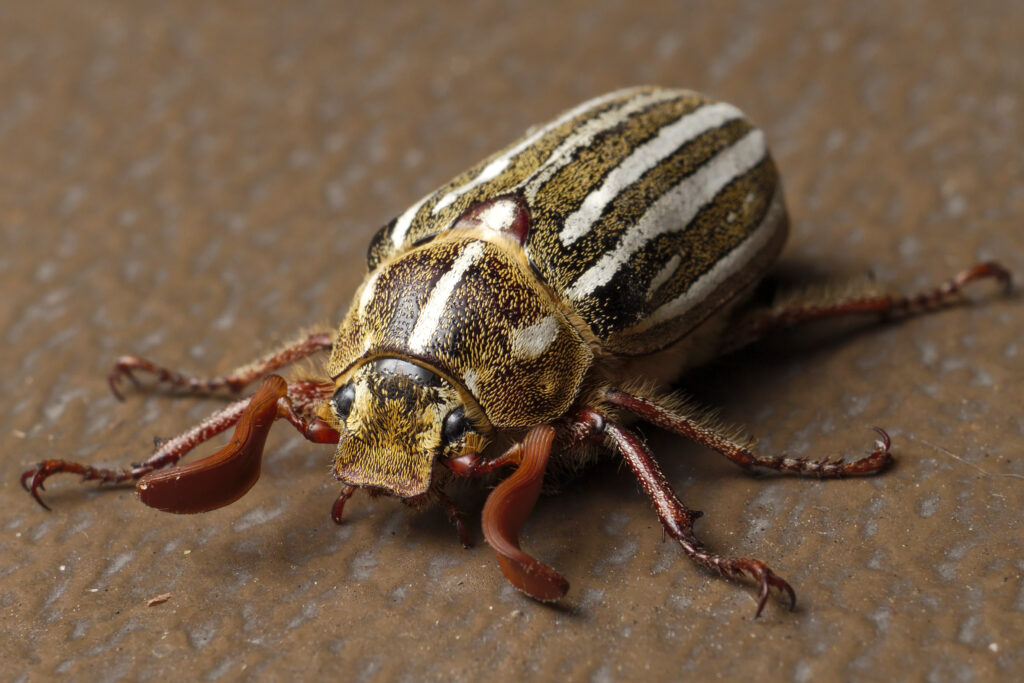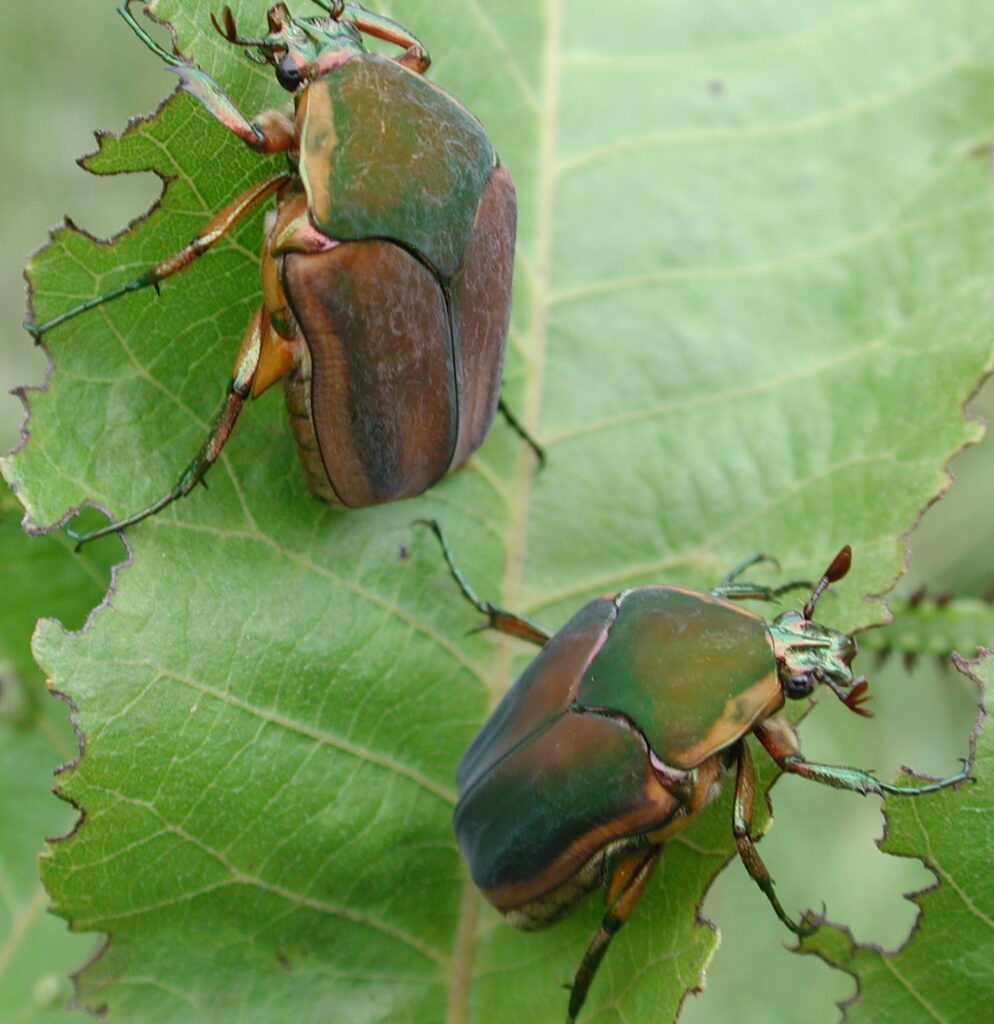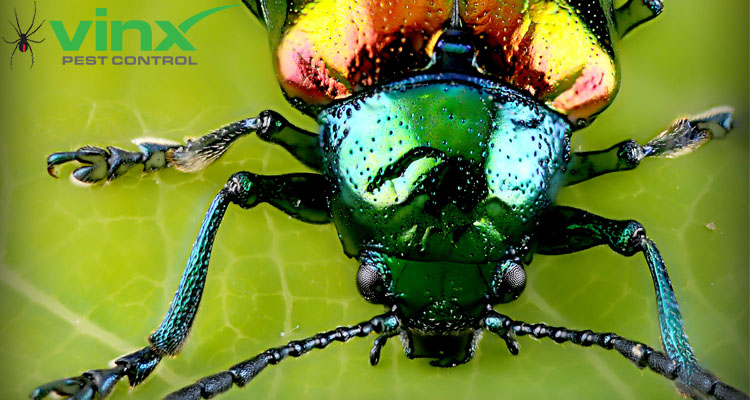June bugs are a common nuisance for homeowners, especially during the warm summer months when they become most active. These beetles, part of the scarab family, are known for their clumsy flight and attraction to light sources at night. They are commonly found across North America, particularly in warm, grassy areas where they lay their eggs. Understanding their life cycle, habitat, and potential impact on your yard is essential for keeping them under control and learning how to get rid of June bugs effectively.
Do June Bugs Bite?
The short answer is no—June bugs do not bite humans. However, their larvae can cause serious damage to your lawn, and their sheer numbers can be frustrating for homeowners. If you’re dealing with a bug problem, there are simple ways to get rid of june bugs for good, with the help of professional pest control.
At Vinx Pest Control, we specialize in effective pest solutions for homes and businesses in Texas and South Carolina. If you need professional pest control, get a free quote here.
What Are June Bugs?
June bugs, also called June beetles or May beetles, belong to the Melolonthinae family of plant-eating beetles. These beetles emerge in early summer, often in large numbers, and are most active at night.
What Does a June Bug Look Like?
- Color: Reddish-brown, green, or striped (depending on the species)
- Size: ½ to 1 inch long
- Shape: Oval-bodied with hard, shiny wing covers
- Flight Pattern: Clumsy and erratic
June bugs are commonly found in the southern United States, especially in areas with lush, well-maintained lawns—which unfortunately makes many homes a prime breeding ground.
For expert pest prevention tips, visit our Pest Prevention Guide.

Can June Bugs Bite?
The good news is that June bugs do not bite humans or pets.
Unlike mosquitoes, ticks, or even some beetles, June bugs do not have strong mandibles or venom. They may land on you accidentally, but their legs might feel prickly due to small spines. This can sometimes cause minor irritation, but it is not a bite.
Are June Bugs Dangerous?
While June bugs are harmless to humans, they can be destructive to lawns, gardens, and plants in both their adult and larval stages.
- Adult June Bugs: Feed on leaves, flowers, and fruit, but usually don’t cause serious damage.
- June Bug Larvae (Grubs): Feed on grass roots, plant roots, and decomposing organic matter, which can kill large patches of lawn.
If you’ve noticed brown spots in your grass or small holes dug into your yard, you may have grubs underneath the soil.
Why Are June Bugs Attracted to Light?
June bugs are strongly attracted to artificial light, often swarming around porch lights or bumping into windows at night.
Why Do They Do This?
Scientists are still unsure why some insects are drawn to light, but possible theories include:
- Navigation Confusion – June bugs may use the moon and stars for orientation, and artificial lights disrupt their navigation.
- Phototaxis Response – Many insects are naturally drawn to bright light, which tricks their instincts into thinking they are moving in the right direction.
- Mating Behavior – Some studies suggest that light stimulates mating behavior in certain insects.
If you’re tired of June bugs swarming your porch, consider switching to yellow bug lights, which are less attractive to insects.
What Do June Bugs Eat?
June bugs start their lives underground as grubs, feeding on grass roots and decaying organic material before emerging as adults.
What Adult June Bugs Eat:
- Leaves
- Shrubs
- Fruit trees
- Garden vegetables
- Grass
What June Bug Larvae (Grubs) Eat:
- Lawn and plant roots
- Decomposed organic matter
- Mulch and decaying leaves
June bug larvae are far more destructive than adults because they kill plants from the roots up. If you notice large brown patches in your lawn, grubs may be the cause.

How to Get Rid of June Bugs
1. Lawn Treatment for Grubs
The most effective way to reduce June bug populations is by eliminating their larvae before they mature.
- Apply a lawn insecticide (like Sevin) to kill grubs before they become adults.
- Use milky spore powder, a natural bacteria that infects and kills June bug grubs.
- Water your lawn deeply and allow it to dry out completely—grubs thrive in moist soil.
2. Reduce Outdoor Lighting
Since June bugs are attracted to light, reducing outdoor brightness can make your home less inviting.
- Use yellow bug lights instead of bright white lights.
- Turn off porch lights when not in use.
- Close curtains or blinds to prevent indoor light from attracting bugs to windows.
3. Natural Predators
Encouraging natural predators in your yard can help control June bug populations.
- Toads, frogs, and certain birds eat both adult June bugs and their larvae.
- Harmless backyard snakes (like garter snakes) feed on grubs in the soil.
Get Rid of June Bugs with Vinx Pest Control
Don’t let June bugs take over your lawn and garden! At Vinx Pest Control, we specialize in eliminating pests at the source, preventing future infestations, and keeping your outdoor spaces healthy year-round. Our expert team uses safe, effective treatments tailored to your specific needs, ensuring your home stays pest-free. Contact Vinx Pest Control today for a free consultation and let us help you get rid of June bugs for good!




